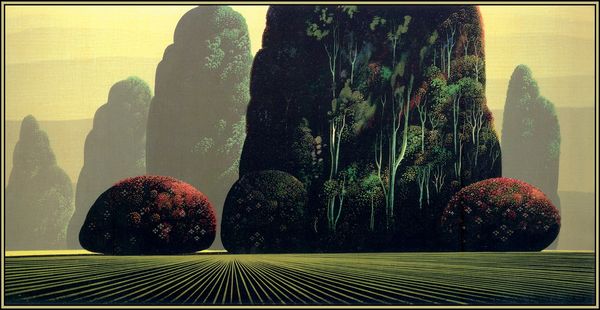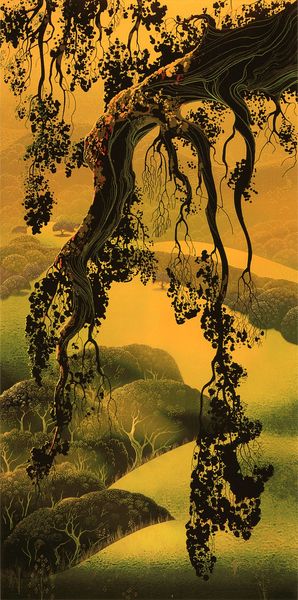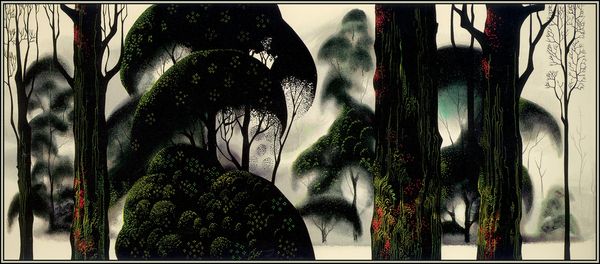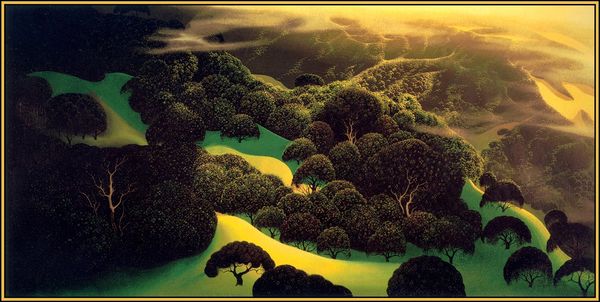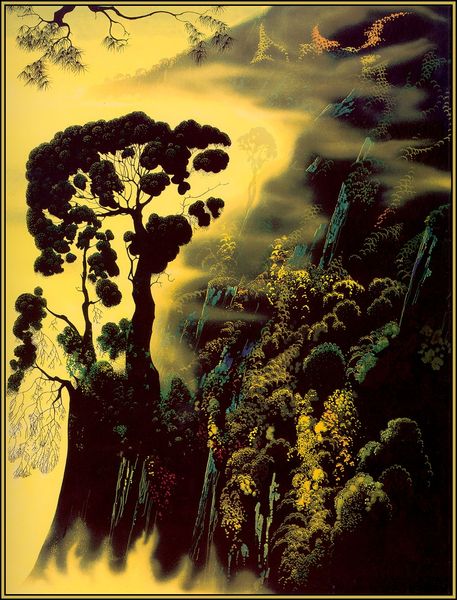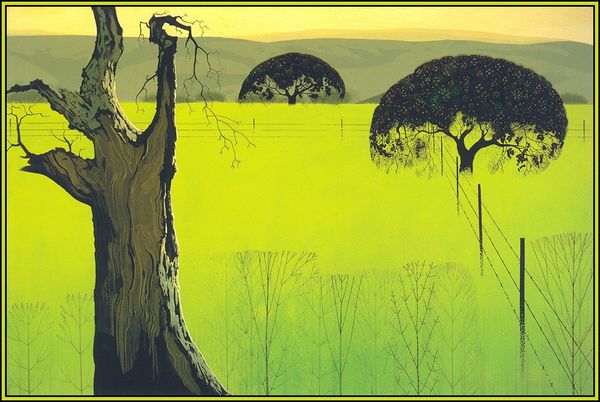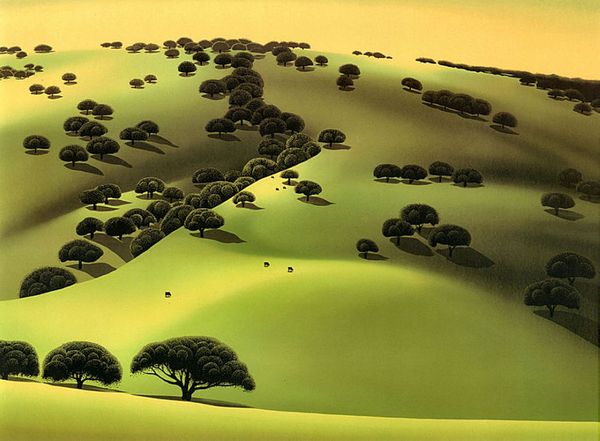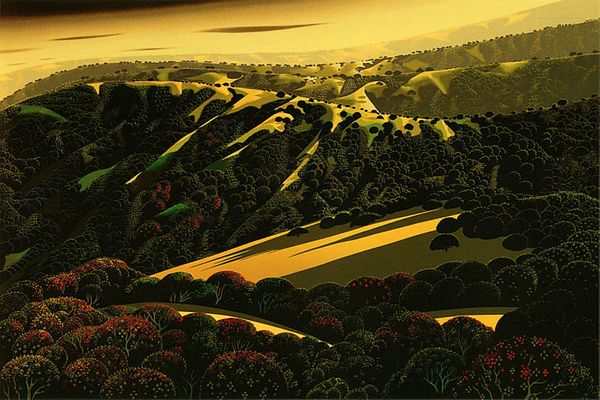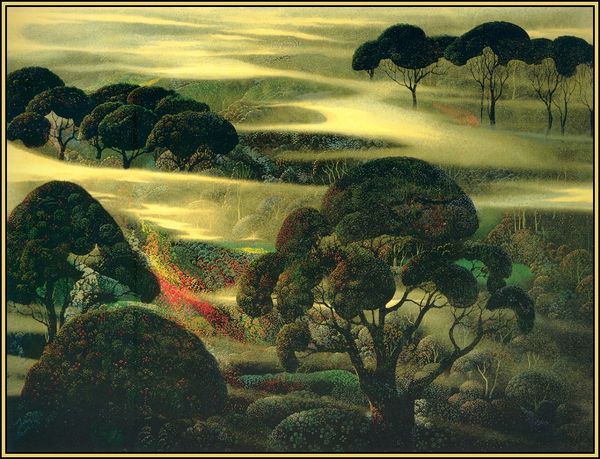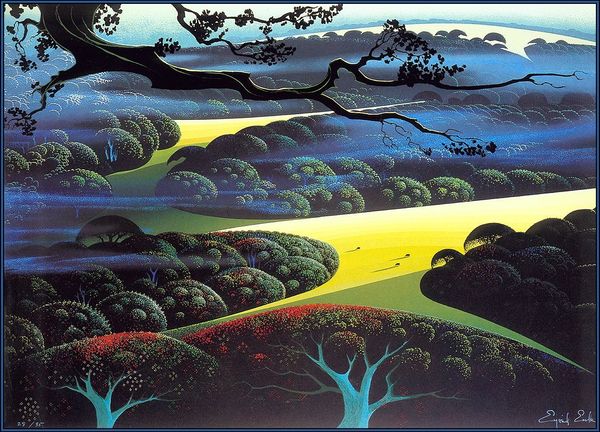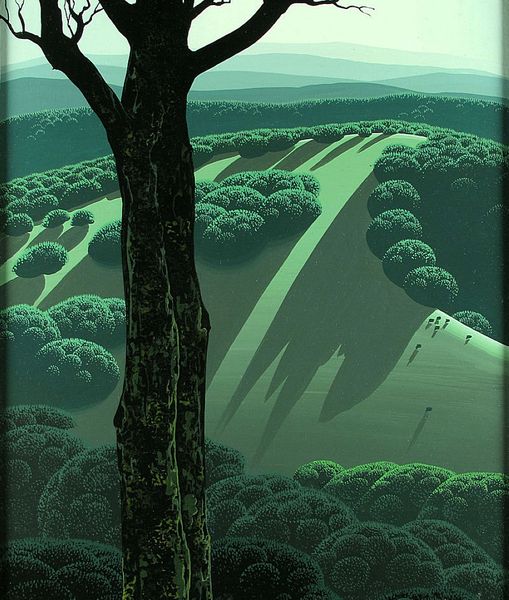
painting, plein-air, impasto
painting
plein-air
landscape
nature
impasto
romanticism
nature
realism
Copyright: Eyvind Earle,Fair Use
Curator: Before us, we have "Golden Hills" by Eyvind Earle. Painted en plein air, it's a striking example of realism meets romanticism. Editor: Oh, wow, it's like walking into a dream. Those velvety hills...it almost feels like I could touch them. And the solitary tree on the horizon – it whispers stories of resilience. Curator: Absolutely. The technique really draws the eye. Earle uses impasto to give a tactile quality, making you think about the physical application of paint to create such depth. Considering the plein-air process, one thinks about the portability of art and labor... Editor: It’s funny you mention labor; looking at it, I see something so calming. Like golden honey poured over the land. It is very immersive. Curator: Immersive, yes. But also, how the material and location play into each other. "Golden Hills" emphasizes the impact of industrial agriculture in California's central valley. How landscapes are commodified for human consumption and profit. Editor: You know, when I see that golden light, I picture a field where wheat grows and dances in the sun. What would it feel like to lose oneself in its golden embrace? It feels very much like childhood—simple joy, boundless freedom. Curator: Interesting, because even that sensation harkens back to a very historical, constructed vision of rurality. Where does our connection with nature originate? Is it an imagined landscape informed by artistic creation or by the materials needed to feed consumer capitalism? Editor: Perhaps a bit of both? Like the canvas itself—a combination of nature and artistry. A question: can a landscape touched by humanity still feel magical, alive, brimming with untold stories? "Golden Hills" asks, or maybe whispers that yes, absolutely, it can. Curator: Indeed.
Comments
No comments
Be the first to comment and join the conversation on the ultimate creative platform.
